JACQUELINE M. GERRISH
 OAKLAND / PALERMO – Jacqueline Margaret Gerrish, 79, passed away Tuesday, February 11, 2025, following a lengthy illness, at Mt. Joseph’s Rehab Facility, in Waterville. Jackie was born in Portland to Charles “Frank” and Margaret (Sargent) Gerrish.
OAKLAND / PALERMO – Jacqueline Margaret Gerrish, 79, passed away Tuesday, February 11, 2025, following a lengthy illness, at Mt. Joseph’s Rehab Facility, in Waterville. Jackie was born in Portland to Charles “Frank” and Margaret (Sargent) Gerrish.
She received her education in Hartford, Connecticut. As a high school student, she volunteered at the Oak Hill School for the blind and deaf. This experience inspired her to pursue a career in public service. Jackie continued her education at the University of Connecticut, and after graduation, she took a permanent position at the Oak Hill School for the Blind and Deaf.
In the 1970s, Jackie moved to Palermo to live with her father after her mother’s passing. She took a position for the Community Justice Project and in 1977 she became a certified social worker for the State of Maine working with adults with disabilities. Jackie loved her work and was dedicated to making a difference in her client’s lives. She retired from her position after 33 years of service.
Jackie loved nature and was an avid gardener. For several summers, along with her dear friend, Kathy Poulin Guzman, they hosted a garden party in her beautiful gardens, which was enjoyed by friends and family. Jackie loved animals and each of her furry friends were treated like a valuable family member. She also had a deep closeness with the children in her life, spending countless hours enjoying their company.
She was predeceased by both her parents; brothers Ralph, Timothy, and Frank Gerrish, and sisters Francina Gerrish Haskell and Madeline Gerrish Bartol.
Jackie leaves behind many cousins, nieces, and nephews.
There will be a celebration of Jackie’s life at the Sheepscot Lake Fish and Game Association, located on Route 3, in Palermo, on Sunday, April 13, at 1 p.m.
Jackie’s ashes will be placed at the family plot at the Oakfield Cemetery, in Oakfield, this summer.
Please visit Jackie’s memorial page at https://svremembrancecenter.com/obituaries/jacqueline-gerrish-2025 where condolences, photos, and special memories may be shared.
In lieu of flowers please consider a donation in Jackie’s memory to the Humane Society Waterville Area, 100 Webb Rd., Waterville, ME 04901.
DAVID H. GORTON
 ARDMORE, Oklahoma – David Hoyt Gorton, 67, passed away on Tuesday, February 11, 2025, following complications from pneumonia. He was born in Saint Albans, Vermont, on August 1, 1957, the son of Hugh W. Gorton and Lois G. Cherry Gorton.
ARDMORE, Oklahoma – David Hoyt Gorton, 67, passed away on Tuesday, February 11, 2025, following complications from pneumonia. He was born in Saint Albans, Vermont, on August 1, 1957, the son of Hugh W. Gorton and Lois G. Cherry Gorton.
The family moved to Augusta when Dave was four years old. He attended Cony High School, in Augusta, graduated in 1975, and then obtained a bachelor’s degree from Roger Williams College, in Rhode Island, in 1979. He also spent one year in London to continue his education. Dave met his wife, Donna, in 1982, and they were married in 1983.
Dave was very involved in China Baptist Camps, in Maine, as a camper, then as a counselor, camp pastor, and coordinator. He was always known as “Big Dave!”. He always would say, “As long as I have breath within me, I will serve the Lord.”
He assisted Pastor Russell Smith at the Centre Vassalboro Baptist Church and then accepted the calling as full-time pastor at the North Vassalboro Baptist Church from 1986 to 1992. His next calling was from 1992 to 2012 at the North Windsor Baptist Church. He started a Home Church Fellowship, in Maine, for five years. His final calling was in 2022 to help in any way he could at the Maranatha Free Will Baptist Church in Ardmore, Oklahoma.
Dave’s hobbies and activities through the years were studying God’s Word, camping, fishing, hiking, putting together WWII Italian Army model ships, cannons, tanks, and trucks.
He was husband to Donna Lutz Gorton for 41 years.
He was preceded in death by his father and mother.
He is survived by his wife, Donna; sister, Cherry Gorton, of Massachusetts; brothers, Grant John Gorton and his wife Kathleen, of Vermont, and Burton Gorton and his wife Jeanne, of New York; brother-in-law, Robert Lutz and wife Diane, of Maine; several nieces, nephews; grandnieces and grandnephews.
A Celebration of Life service will be held, on Saturday, March 8, at Maranatha Free Will Baptist Church, 1906 Myall Rd., Ardmore, Oklahoma, at 10 a.m. A second Celebration of Life is planned for Saturday, October 4, 2025, at China Baptist Church with Pastor Ron Morrell officiating the service, at 10 a.m. Burial will be at the conclusion of the service in Camden.
GARY R. HAWKINS
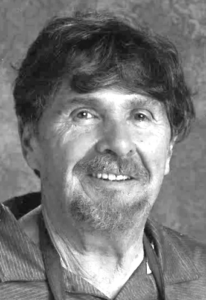 AUGUSTA – Gary Robert Hawkins, 76, died Wednesday, February 19, 2025, at MaineGeneral Medical Center following a long and productive life. He was born in Augusta on July 4, 1948, the son of Robert Boyd and Arline (Lajoie) Hawkins.
AUGUSTA – Gary Robert Hawkins, 76, died Wednesday, February 19, 2025, at MaineGeneral Medical Center following a long and productive life. He was born in Augusta on July 4, 1948, the son of Robert Boyd and Arline (Lajoie) Hawkins.
He grew up in Augusta and graduated from Cony High School in 1966. Following high school, “Hawk”, as his friends called him, was enlisted in the U.S. Army where he served six honorable years in the reserves.
Hawk worked a variety of jobs in his post-high school years. In 1976, he became a part-time writer in the Kennebec Journal sports department. By 1980, he had been promoted to full-time staff member. What started as a passion for local sports became a beloved career of 38 years. He said it was a blast.
But proving it wasn’t just about the infamously-lofty journalism paycheck, Hawk also volunteered his time mentoring countless youth athletes. Beginning in 1974, he started coaching junior high basketball and Babe Ruth baseball for St. Mary’s School (now St. Michael), in Augusta. He would frequently follow the high school careers of his players, even recalling specific championship performances many years later. In 2017, Hawk was inducted into the Maine Basketball Hall of Fame.
In 1978, Hawk met the love of his life, Railynn Smith, of Gardiner. They began dating in 1981, at which time he let her call him Gary. They eventually had two children before settling into their Augusta home in 1988. Throughout their 40-year marriage, Gary and Railynn frequently spent time with family and friends, with a special pleasure for visiting the Maine coast. Boothbay Harbor became a particular joy as they spent many summer weeks there year after year.
After retirement, Hawk sought to support his lifelong love of golf with more than a pension could provide. He soon obtained work with St. Michael School, continuing his tradition of serving the youth of Augusta.
In addition to his love of golf, Hawk played many different sports throughout his life. He could often be found in basketball and softball leagues, and he would occasionally be spotted on a pair of skates at the ice arena in Hallowell or even the rink in his own backyard.
Hawk’s mother, Arline, was always the best cook in the family, but Hawk was a close second. He would effortlessly put together the best holiday meals, late-night cheeseburgers, and American chop suey. The grill on the back deck would only go into storage when the weather demanded it be so.
Hawk also loved to talk sports with friends and coworkers over a beer or two. One of his favorite watering holes was Lisa’s, on Bangor Street. He had been a faithful patron since its days as Mike’s, and he visited there with friends and family for almost the entirety of his adult life.
Hawk’s great sense of dry humor was as understated as he was, and he had a much greater interest in others than himself, some of the reasons he had so many friends and admirers.
In addition to his wife of 40 years, Gary is survived by two sons, Ryan and his partner Justin, of Gardiner, and Michael and his wife Jocelyn, also of Gardiner, and their children Theo, Kael, and Konnor; his brother, Bob, of Augusta, and his sons Tyler and Todd and their mother, Susanne, of Baltimore, Maryland; his uncle Dick and Aunt Marion, former long-time residents of Augusta.
A celebration of life took place on Friday, February 28, 2025, at the Augusta Elks Lodge, 397 Civic Center Dr., Augusta.
Condolences, stories and photos may be shared at http://www.plummerfh.com.
Memorial donations may be made to the St. Michael School Athletic Program, 56 Sewall St., Augusta, ME 04330.
JACKIE DORKO
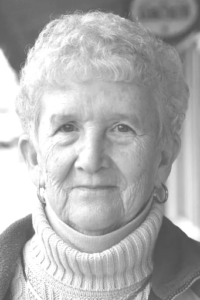 CLINTON – Jackie Dorko, 84, of Clinton, passed away on Sunday, February 23, 2025. Born in Eagle Lake on July 7, 1940, she was the daughter of Lorena and Donah Pelletier.
CLINTON – Jackie Dorko, 84, of Clinton, passed away on Sunday, February 23, 2025. Born in Eagle Lake on July 7, 1940, she was the daughter of Lorena and Donah Pelletier.
After graduating from Lawrence High School, in Fairfield, she met and married Robert “Bob” Dorko Sr. in 1959.
She and Bob raised five children, Laurie Haj Ashab, Joy Ware, Mary Gallagher, Angel Maillet, and Bob Dorko.
In addition to being a wonderful mother, grandmother, great-grandmother, and wife, she was an avid gardener and loved to read. In 1977, she joined the Clinton Elementary School staff and worked as a librarian until retirement. She was proud to have helped the many students, who passed through the Clinton school system, enjoy literature.
She was predeceased by her husband, Bob; and her daughter, Laurie Haj Ashab.
On Friday, February 28, a funeral Mass was held at Notre Dame Church, in Waterville.
Services are under the care of Veilleux Redington Lawry Brothers Funeral Home, 8 Elm St., Waterville.
For family and friends who wish to honor Jackie’s memory, the family encourages donations to your local library.
ALVAH E. DONNELL JR.
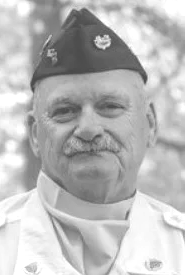 BELGRADE – Alvah E. Donnell Jr., 69, passed away on Sunday, February 23, 2025. He was born on January 21, 1956, in Augusta, to Alvah E. Donnell Sr. and Dorothy (Betts) Donnell Tisdale. He was raised in Gardiner and graduated class of 1974.
BELGRADE – Alvah E. Donnell Jr., 69, passed away on Sunday, February 23, 2025. He was born on January 21, 1956, in Augusta, to Alvah E. Donnell Sr. and Dorothy (Betts) Donnell Tisdale. He was raised in Gardiner and graduated class of 1974.
He was a member of the Sharples Drill team from 1967-1970 and served in the U.S. Army from 1974-1978. He was currently a member of the American Legion Post #40, in Winthrop, and 1st Vice Commander for District #9, American Legion, member of the Maine Veteran Cemeteries for the State of Maine and serving as commander for the Kennebec County Veterans Honor Guard.
He served on the Pittston Fire Department for 24 years and served on several town boards while living in the town of Pittston.
He was predeceased by both parents, and stepfather, Arthur Tisdale, Sr.; stepsister, Diane Bryant, sister, Joanne and son, Alvah E. Donnell III; and lifelong Army buddy, Roland Price.
He is survived by his wife, Patricia A. Donnell of 45 years; and by four children, Una Purvis (Dan), of Carmel, Ivy Donnell, of Milo, Angela Donnell (Bob), of Belgrade; a son, James Donnell (Kelly), of Farmingdale; nephews William Price (Amy S), of Anson, Charles Price (Amy B), of Emden; siblings, Alice Zawadzki, Ben Tisdale, Alan Tisdale, Wilson Donnell, Sharon John, Hugh, Joel, and Richard; grandson, Kendall Paquette; grandchildren; and great-grandchildren.”
Al’s graveside service was held at the Maine Veterans Memorial Cemetery, Blue Star Avenue, Augusta, on Thursday, March 6. A celebration of life followed immediately after at the American Legion Post #40, Winthrop.
Arrangements and guidance are in the care of Knowlton and Hewins Funeral Home and Cremation Care, One Church St., Augusta.
Condolences, memories, and photos may be shared with the family on the obituary page of the Knowlton and Hewins Funeral Home website, http://www.khrfuneralhomes.com.
In lieu of flowers, please send donations to the Kennebec County Veterans Honor Guard, 815 Manchester Rd., Belgrade, ME 04917.
HENRY N. FOSSETT SR.
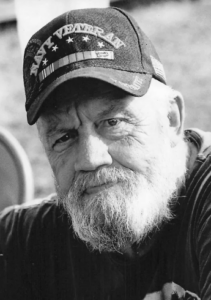 AUGUSTA – Henry Norman Fossett, Sr., 77, passed away on Wednesday, February 26, 2025, at Maine Medical Center, in Portland. He was born on March 19, 1947, the son of Norman and Arlene (Hughes) Fossett.
AUGUSTA – Henry Norman Fossett, Sr., 77, passed away on Wednesday, February 26, 2025, at Maine Medical Center, in Portland. He was born on March 19, 1947, the son of Norman and Arlene (Hughes) Fossett.
Henry grew up in Vassalboro and was a graduate of Hall-Dale High School, in the class of 1965.
Following school, he enlisted in the U.S. Navy and served during the Vietnam War. Upon his honorable discharge, Henry returned home to Maine, started a family, and was married to Marie Rose Charest.
Henry worked at Kirschner Foods, ultimately retiring after many years of employment. Henry was an avid hunter and enjoyed collecting coins. He was also a life member of the American Legion Fitzgerald-Cummings Post #2, VFW Post #887, and the NRA.
He was predeceased by his parents; and a sister, Colleen True.
Henry is survived by his sons Henry Fossett Jr., Dan Fossett and his wife Sue and their son Ryan, Jack Fossett and his wife Stacy; his sister, Melody Beaulieu; and a brother-in-law, Tim True.
A period of visitation will be held on Saturday, March 15, 2025, from 11 a.m. to 1 p.m., at Plummer Funeral Home, 16 Pleasant St., Augusta, ME 04330. A graveside service will be held on a date and time to be announced in the spring in Vassalboro.
Condolences, stories and photos may be shared by visiting http://www.plummerfh.com.
In lieu of flowers, memorial donations in Henry’s name may be made to Tunnel to Towers at http://www.t2t.org.
Others Departed
THOMAS W. ANDREWS
MADISON – Thomas W. Andrews, 74, passed away quietly, at home, on Monday January 20, 2025. He was born on March 30, 1950, in Bangor.
Tom had a passion for working on vehicles and feeding birds. He loved classic cars, Harley Davidson motorcycles, and was known by friends and family to give his time to help them in even the most mundane of tasks.
He was predeceased by his parents Sherwood and Lois Andrews; his brother, Andrew “Andy” Andrews and several half-siblings.
He is survived by his wife, the love of his life, Julia M. Andrews; his daughter, June M. Potter and stepdaughter, Sara Bruce; his sons Thomas Andrews, Timothy Andrews, Robert “Frankie” Andrews, Warren Andrews, and Christopher Andrews; grandchildren; and many nieces, and nephews.
A remembrance gathering will be held in late spring for friends and family at a date to be determined, followed by the spreading of his ashes on Boot Hill.
DIANE H. PARKER
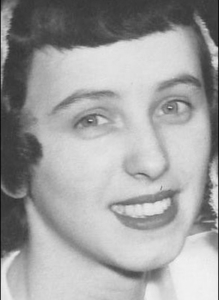 PORTLAND – Diane Houghton Parker, 95, passed away peacefully on Saturday, February 1, 2025. She was born November 24, 1929, in Providence, Rhode Island, only child of show business parents Wilfred and Dorothy Gray Houghton.
PORTLAND – Diane Houghton Parker, 95, passed away peacefully on Saturday, February 1, 2025. She was born November 24, 1929, in Providence, Rhode Island, only child of show business parents Wilfred and Dorothy Gray Houghton.
She was raised in South Portland by her maternal grandmother, Annie Martin Gray, and an aunt, Helen McBrady Gilchrist. Diane graduated from South Portland High School in 1947. She worked for a time at the phone company before marrying.
She married Francis X. Parker in 1950 and moved to the Augusta/Gardiner area where they raised five children while Frank worked for IBM. They were parishioners at St. Mary’s Church, in Augusta.
During these years she was active as a volunteer in the Augusta Community Concert Assn., Parents’ Creative Arts Committee, Augusta General Hospital, and the Oblate Retreat House. She also worked during these years at the Maine Heart Association, the Kennebec Journal, UMA Bookstore, the Talent Tree Art Gallery, and the ME Library Advisory Comm.
After their divorce in the mid ‘70s, Diane continued her college education, and added to her many skills by working as a secretary for the UMA FORUM-A office, in Augusta, then moving to Orono to work as an admin. secretary at UMO. She then moved back to the Portland area to work at the University of Southern Maine, the Maine District Court, and finally with Mary Alice Reilly Antiques, in Portland, and later Mulberry Cottage, in South Portland. She maintained a long wonderful relationship with Mary Alice and her family for many years afterwards.
Diane also had a wonderful relationship with her sisters-in-law – Jean, Nina, Mary Lou, and Elaine. They were the glue that bonded the large Parker family together in a way that inspires others to this day.
She had a great appreciation of the arts, music, languages (especially French), proper grammar and travel, visiting Europe three times, twice with her children! She was witty, sarcastic, intelligent, inquisitive and appreciative of other people’s talents.
She lived in Cape Elizabeth for 30 years in her last, favorite apartment. It was here she enjoyed playing her piano (beautifully!), holding Scrabble tournaments with family, enjoying her classical music and Opera CDs, reading, and listening to PBS. She was a member of St. Bartholomew’s Parish, in Cape Elizabeth.
Her final years were spent at Fallbrook Woods memory facility, in Portland, where she entertained.
Now that Diane is finally flying free, her family is celebrating her lifelong love of planes. She started a serious love affair with flying when she had her first flying lessons at age 18. Her children presented her with another lesson at age 70, she took lessons in Scarborough at age 79, and she flew again in an old fighter plane in her 80s.
She found joy in simple things, needed so little and was grateful for what she had. At times not an easy life and born too early for her to soar. She had such appreciation for small things, especially French things.
Diane was pre-deceased by her son Michael Parker, and a grandson Derek Emery.
She is survived by a brother John and wife Laurel Rodman, of Tiverto, Rhode Island, her daughters Elizabeth and husband John Campbell, of Chelsea, Susan Parker, of Brunswick, Jane Parker and partner Kevin Cassidy, of Eagle, Colorado, and her son Gregory and wife Jerrie Parker, of Albion; four 4 grandchildren; and 8 great grandchildren
Visiting hours will be Friday, May 30 4 – 7 p.m., at Hobbs Funeral Home, in South Portland. A graveside service will be Saturday, May 31, 11a.m., at Riverside Memorial Cemetery, in Cape Elizabeth, followed by a Celebration of Life, at Two Lights State Park (The Group Shelter, handicap accessible, watch for signs) in Cape Elizabeth.
MARLENE M. McGOVERN
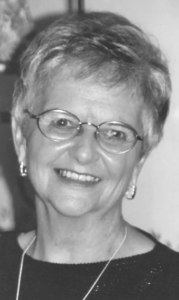 SACO – Marlene Mary (Langlois) McGovern, 92, passed away on Wednesday, February 26, 2025. She was born on July 12, 1932, in Boston, Massachusetts, the second of three children born to Albert H. and Elsie (McNeil) Langlois.
SACO – Marlene Mary (Langlois) McGovern, 92, passed away on Wednesday, February 26, 2025. She was born on July 12, 1932, in Boston, Massachusetts, the second of three children born to Albert H. and Elsie (McNeil) Langlois.
Having moved to Maine as a young girl, Marlene was educated in Portland schools, graduating from Cathedral High School, in 1950. She met her future husband, Kenneth G. “Greg” McGovern, in Portland, in 1954, and they were married in 1956.
Following several years in Portland and the birth of their daughter, Kelly, they moved to Winslow. The birth of a son, Ken, completed the family, which resided in this part of Maine for more than a quarter century.
Throughout her time in Central Maine, Marlene looked after the family and worked in various administrative roles for local businesses. She was very active in local clubs, such as Antique Club and Contemporary Club, and had a broad circle of friends throughout the area. Relocating to the Greater Portland area in the late 1980s, Marlene worked as a hospice volunteer and a tour guide at the Joshua L. Chamberlain Museum, in Brunswick.
She was an avid quilter and each of her grandsons were frequent recipients of her various creations. Marlene also enjoyed travel, and together with Greg, she traveled widely across North America, and enjoyed multiple trips to Ireland, Europe, and Australia.
Marlene was predeceased (November 2024) by Greg, her husband of 68 years. Her siblings Frank Langlois and Helen Langlois, and their spouses have predeceased her.
She is survived by her daughter, Kelly McGovern Shaw and her husband Bob, of Falmouth; and her son, Ken and his wife Michelle, of North Vancouver, British Columbia, Canada; four grandsons, Ben Shaw (Falmouth), Cameron Shaw (Auburn) and his wife Sage, Declan McGovern (Victoria, BC) and Mark McGovern (North Vancouver, BC); nephews Ken Higgins and Michael Higgins; and a niece, Marianne Langlois.
A private graveside service was held on Wednesday, March 5, 2025, at Calvary Cemetery, in South Portland.
Please visit http://www.jonesrichandbarnes.com to view Marlene’s tribute page and to sign her online guestbook.
CHERYL A. GOFF
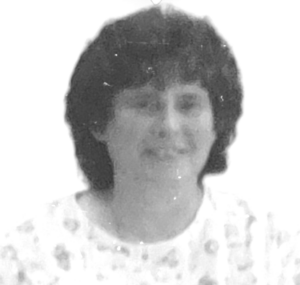 MADISON – Cheryl A. Goff, 74, passed away on Friday, December 20, 2024. Cheryl was born September 9, 1950, in Farmington, the only child to Elwood & Thelma Chesley.
MADISON – Cheryl A. Goff, 74, passed away on Friday, December 20, 2024. Cheryl was born September 9, 1950, in Farmington, the only child to Elwood & Thelma Chesley.
Cheryl spent her school years in Kingfield. Her class was the last to graduate from Kingfield High School, on June 13, 1969. She went on from there and earned her associates degree. For 17 years Cheryl spent her days waitressing at the 3G’s Restaurant, in Skowhegan. Later in life she spent time caring for developmentally disabled adults.
Throughout these years she met many people that she genuinely cared for and many people that kept her close to their hearts as well.
When Cheryl moved out of state, she left the life she missed dearly in the end of her time. Her desire was to get back home to the life that she missed in Madison.
Cheryl was a proud member of the United Methodist church and of the United Baptist church since the age of 4.
Survivors include her daughters Jennifer Goff and Jessica Crispin; her four grandchildren Cameron and Brandon Schmidt and Jaithon and Brilynn Crispin; great-grandchildren Parker and Dahlia Crispi; as well several cousins.
Now that Cheryl’s back in town she will R.I.P. She’s back home to where her heart was!
A service and celebration of Cheryl’s life will be provided by Giberson Funeral Home, on Saturday March 15, 2025, at 3 p.m., at the Christ Community Fellowship Church, 43 Maple Street, in Madison. This is across the road from Giberson Funeral Home.
MARGARET E. CHIN
 PORTLAND – Margaret Elisabeth (Smith) Chin passed away peacefully on Tuesday, January 14, 2025. Born to Mary “Mae” Rita (Dionne) Smith and L. Aubrey Smith, in Waterville, in 1952, as the fifth of 10 children.
PORTLAND – Margaret Elisabeth (Smith) Chin passed away peacefully on Tuesday, January 14, 2025. Born to Mary “Mae” Rita (Dionne) Smith and L. Aubrey Smith, in Waterville, in 1952, as the fifth of 10 children.
She graduated from Winslow High School where her accomplishments included head cheerleader, National Honor Society, and voted Most School Spirit by her classmates. She went on to college where she studied at Lesley College, Queen’s College of Canada, and graduated from University of Maine.
Her thoughtful cards were always timely, and the knitted hats, mittens and scarves made with love. As the very extended family grew they were assured to receive a warm card and even warmer hat for the new baby. She always looked forward to her family trips for ice cream (Butter Pecan was her favorite). However, what people will recall most about Margaret was her sweet, gentle nature and kindness.
Her fight with cancer over the past couple of years has been nothing short of heroic and her spirit inspiring. It may have been complications of cancer that took her body, but it was the long term struggle with Schizoaffective Disorder that shaped her adult life. With her husband by her side, they didn’t let this define who she was as she enjoyed a full life as a wife, mother, grandmother, daughter, aunt, sibling and friend.
Please consider donating, volunteering and/or educating yourselves and others of mental health. Visit Nami.org for more information.
In addition to her parents, Margaret was predeceased by her brother, Michael; and daughter-in-law, Terri Lynne Chin.
Margaret is survived by her husband, Thomas, who have been together since 1972 and married in June 1976; as well as two sons and four grandchildren, Kevin and partner Melissa van Wijk (Tommy) and Kenneth and wife Kimberly (Teddy, Charlie and Elizabeth); and eight surviving siblings, Robert (Anne), Judy Daviau (John), Anne Sinclair (David); sister-in-law, Nancy, John, Peter, Jim (Daigo Fujiwara), Joseph, David (Alicia).
ROBERT MINER
 MT. VERNON – Robert Miner passed away on Monday February 17, 2025.
MT. VERNON – Robert Miner passed away on Monday February 17, 2025.
He was well known in the community to be a prominent citizen and gracious man who will be greatly missed. Bob was a disabled veteran who fought in the Vietnam War, and gave 13 years of service as a U.S. Marine and as a Paramedic in the U.S. Air Force.
Bob had a love for animals, and a passion for taking care of them. (He was owner of D.E.W. Animal Sanctuary, in Mt. Vernon.) He started by sheltering animals into his home and eventually started a zoo in 1980. Bob was one of a kind, and many people enjoyed going to the zoo to see the animals as much as talking to him. Bob lived and enjoyed life, he traveled the world, took care of many exotic animals, and helped a lot of people along the way.
Bob leaves behind his partner, Sheila; her sons Chris (wife Lauren), and Nate; good friends John “Mac”, Jared, Claudia, and Nellie.
He will be remembered for his wild and adventurous stories of his past, his connection and love for animals, his selflessness and willingness to help others in need, and his jokester ways of making everyone laugh will fill our hearts forever.
MICHAEL SKOCZENSKI
 LINCOLN – Michael J. Skoczenski, 62, passed away peacefully on Wednesday, February 26, 2025, in Lincoln, following a long illness. Michael was born in Waterville, October 6, 1962, to Alfred and Shirley (Riel) Skoczenski.
LINCOLN – Michael J. Skoczenski, 62, passed away peacefully on Wednesday, February 26, 2025, in Lincoln, following a long illness. Michael was born in Waterville, October 6, 1962, to Alfred and Shirley (Riel) Skoczenski.
He graduated from Waterville High School in 1981 and attended the University of Southern Maine. Mike was a free spirit with a passion for fishing and music, especially The Grateful Dead.
Michael was predeceased by his father Alfred and his brother Brian.
He is survived by his mother Shirley; his daughters, Hannah Duffy and husband Chris, Grace Natole and husband Nate; four grandchildren, Finnegan Duffy, Elsie Duffy, Sullivan Natole and Levi Natole; two sisters, Cheryl Tebolt, of Florida, and Ann, of Massachusetts; and two brothers, Bob, of Florida, and Al, of Washington; several nieces and nephews.
There will be an informal memorial for Michael, in Waterville, this summer. Date and location to be determined.
Services are in the care of Veilleux-Redington-Lawry Funeral Home, 8 Elm Street, Waterville.
 by Peter Cates
by Peter Cates


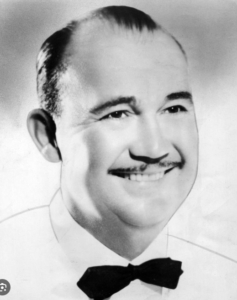

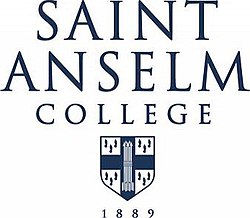

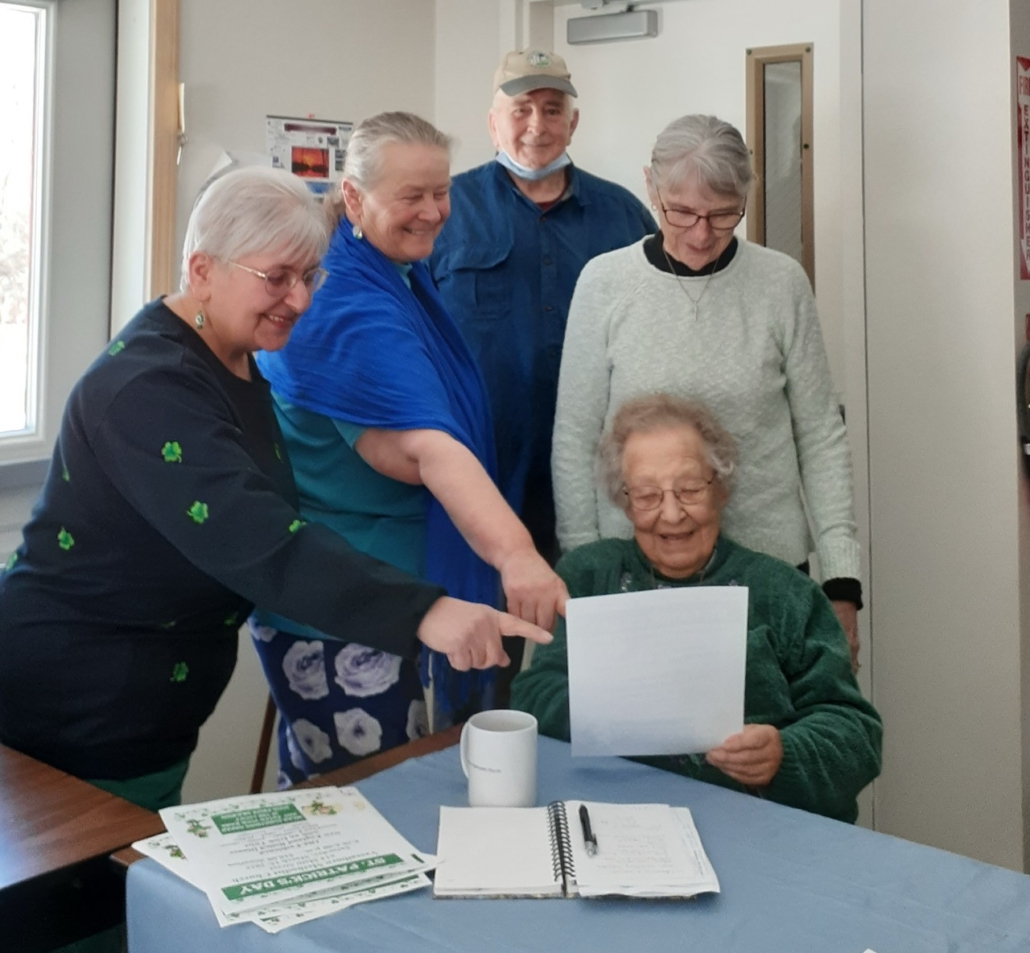



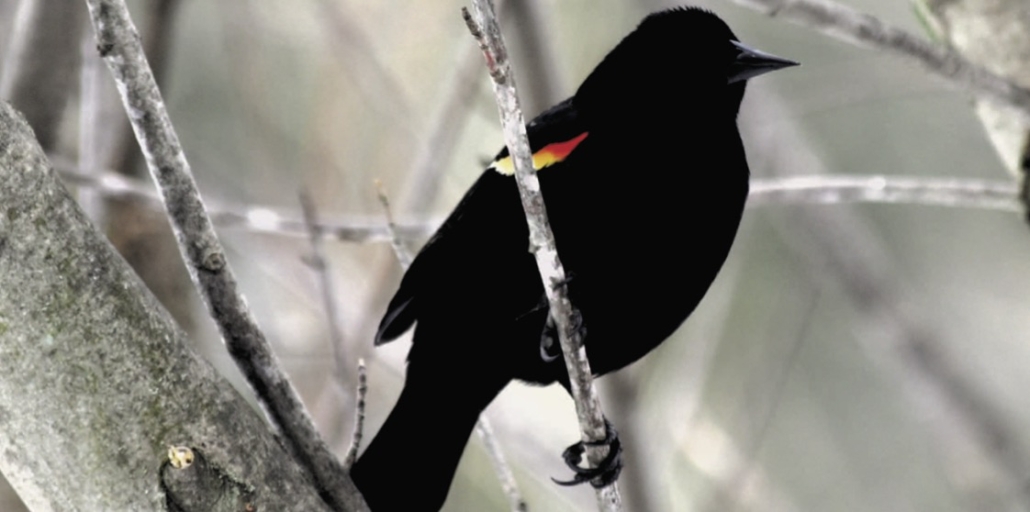













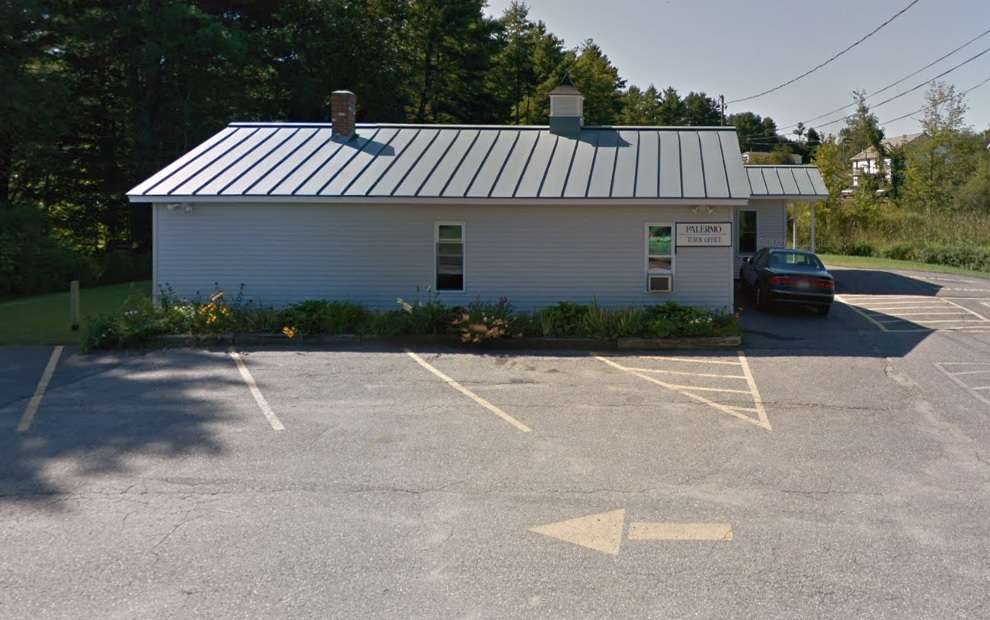 The Palermo Planning Board will meet Thursday, March 13, 2025, at the Palermo Town Office, at 6 pm. Purpose is to conduct official review of plans for the proposed Pine Hill subdivision on Hostile Valley Road, Tax Map R11, Lot 27C.
The Palermo Planning Board will meet Thursday, March 13, 2025, at the Palermo Town Office, at 6 pm. Purpose is to conduct official review of plans for the proposed Pine Hill subdivision on Hostile Valley Road, Tax Map R11, Lot 27C.